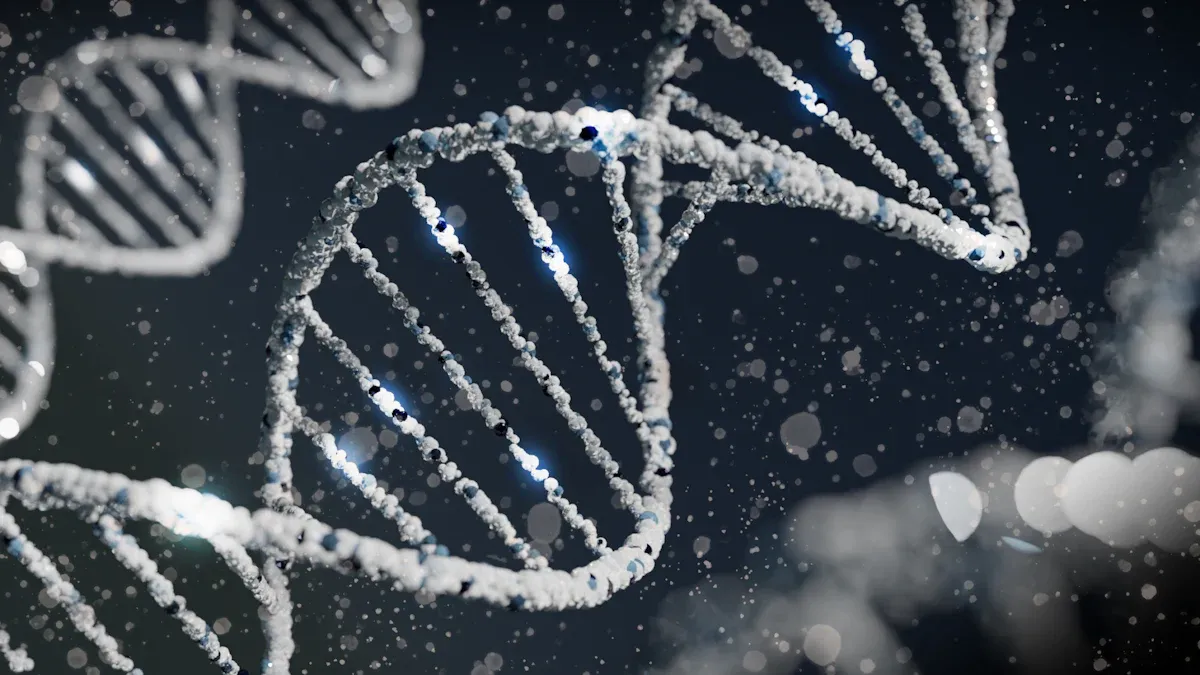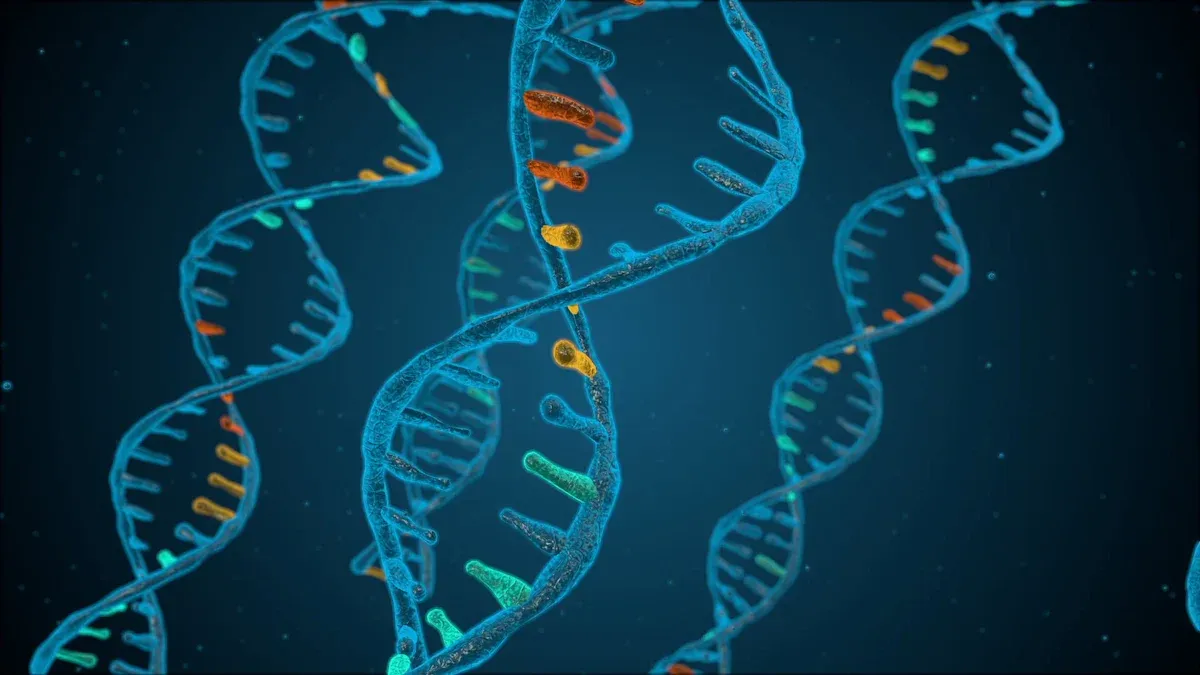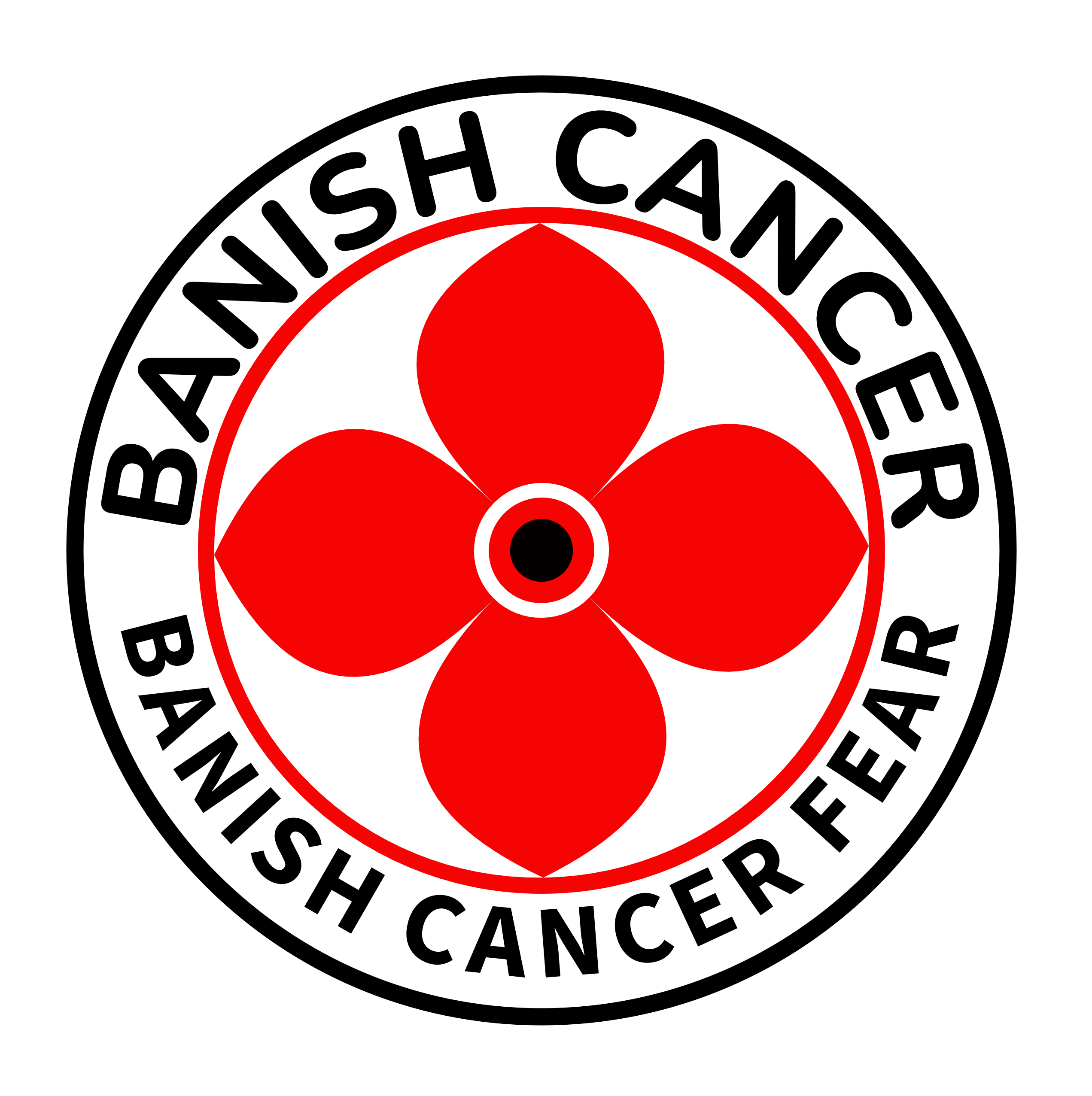How Family History Influences Cancer Risk

Your family history plays a critical role in determining your cancer risk. Certain inherited genetic mutations can increase the likelihood of developing specific cancers. For example, relatives of men with no sperm in their semen face higher risks of bone and joint cancers, Hodgkin lymphoma, and thyroid cancer. Similarly, relatives of men with very little sperm are more prone to testicular and colon cancers. Understanding your family history: genetics and cancer risk can help you identify patterns and take proactive steps to protect your health.
Key Takeaways
Your family history shows cancer risks. Notice cancer patterns in relatives to learn your risk.
Changes in genes can raise cancer risk. Think about genetic testing if many family members had certain cancers.
Healthy habits can reduce cancer risk. Eat healthy, stay active, and avoid smoking.
Regular check-ups help find cancer early. Share your family history with your doctor to plan screenings.
Genetic counseling gives helpful advice. It explains your risks and helps you make smart health choices.
Understanding Your Family History: Genetics and Cancer Risk

What Are Hereditary Cancers
Hereditary cancers occur when genetic mutations pass from one generation to the next, increasing the likelihood of developing specific cancers. These mutations often lead to hereditary cancer syndromes, such as Hereditary Breast and Ovarian Cancer Syndrome (HBOC) and Lynch Syndrome. Families with these syndromes experience higher rates of cancers like breast, ovarian, and colorectal. For example, mutations in the BRCA1 and BRCA2 genes significantly raise the risk of breast and ovarian cancers. Similarly, Lynch Syndrome, caused by mutations in genes like MLH1 and MSH2, increases the likelihood of colorectal and endometrial cancers.
You may notice patterns in your family history, such as multiple relatives diagnosed with the same type of cancer or cancers occurring at younger ages. These patterns suggest a hereditary link. Understanding your family history: genetics and cancer risk can help you identify these connections and take proactive steps to manage your health.
The Role of Genetic Mutations
Genetic mutations play a critical role in hereditary cancer risk. Inherited mutations, such as those in the BRCA1, BRCA2, and TP53 genes, can predispose you to certain cancers. These mutations reduce the number of steps required for cancer to develop, making it easier for additional mutations to accumulate over time. For instance, TP53 mutations are associated with Li-Fraumeni Syndrome, which increases the risk of multiple cancers, including brain and adrenal gland cancers.
The table below highlights some common gene mutations and their associated cancers:
Gene Mutation | Associated Cancers |
|---|---|
BRCA1, BRCA2 | Breast, Ovarian, Prostate, Pancreatic |
TP53 | Li-Fraumeni syndrome, Breast, Brain, Adrenal gland |
MLH1, MSH2, MSH6, PMS2 | Lynch syndrome, Colorectal, Endometrial, Ovarian |
By understanding your family history: genetics and cancer risk, you can determine whether genetic testing might be beneficial for you.
Environmental and Lifestyle Contributions
While genetics play a significant role, environmental and lifestyle factors also influence cancer risk. A 2018 study in Denmark found that 32.2% of cancer cases were linked to avoidable factors, such as tobacco use and UV radiation. Tobacco smoking alone accounted for 14.6% of cases, while UV exposure contributed 5.8%. These findings emphasize the importance of modifiable behaviors in reducing cancer risk.
Even if you have a family history of cancer, adopting healthy habits can make a difference. Avoiding smoking, using sunscreen, and maintaining a balanced diet can help lower your risk. Combining these lifestyle changes with an understanding of your family history: genetics and cancer risk allows you to take control of your health.
The Importance of Knowing Your Family Medical History
How Family History Guides Screening and Prevention
Knowing your family medical history plays a vital role in cancer prevention. It helps you and your healthcare provider identify potential hereditary cancer risks. For example, a family history of breast or colorectal cancer may indicate a higher likelihood of hereditary cancer syndromes. This knowledge allows you to take proactive steps, such as starting cancer screenings earlier than usual. Women with a first-degree relative diagnosed with breast cancer are often advised to begin mammograms in their forties. Similarly, individuals with multiple first-degree relatives diagnosed with colorectal cancer may need colonoscopies earlier than the general population.
Statistics show that approximately 1 in 4 people report having a close relative with cancer. This prevalence increases with age, as family members have more time to develop cancer. Guidelines recommend early screenings for those with first-degree relatives diagnosed at a young age or families with multiple affected members. By understanding your family history, you can work with your doctor to create a personalized screening plan. This approach improves early detection, which significantly increases the chances of successful treatment.
Statistic | Finding |
|---|---|
Prevalence of family history | 1 in 4 participants report a close relative with cancer |
Higher prevalence by race | More common among whites than blacks |
Gender differences | Women report higher rates, but men aged 60-69 report breast/colorectal |
Age correlation | Prevalence increases with age |
High-risk definitions | Early screening recommended for young diagnoses or multiple relatives |
Family History and Personalized Treatment Options
Your family history not only guides prevention but also shapes treatment options. Genetic testing based on family history can reveal mutations that influence cancer risk. For instance, individuals with BRCA1 or BRCA2 mutations may benefit from targeted therapies, such as PARP inhibitors, which are designed to treat cancers linked to these mutations. Personalized treatment plans based on genetic findings improve outcomes and reduce unnecessary treatments.
Clinical studies highlight the benefits of personalized care. About 28% of patients with pathogenic genetic variants had changes in their medical management. Additionally, 1 in 4 patients with high-risk genetic results received tailored cancer care. Discussing your family history with relatives can help you identify patterns and share this information with your doctor. This collaboration ensures you receive the most effective treatment options.
Family health history significantly influences personal cancer risk.
Discussing health conditions with family helps identify preventive measures and screening options.
Understanding your family history: genetics and cancer risk empowers you to make informed decisions about your health. It allows you to take advantage of advancements in genetic testing and personalized medicine, ensuring the best possible care.
Collecting and Analyzing Family Medical History
Steps to Gather Family Medical History
Gathering your family medical history is a crucial step in understanding potential cancer risks. Start by focusing on immediate family members, such as your parents, siblings, and children. Expand your research to include grandparents, aunts, uncles, and cousins. This broader scope helps you identify patterns that may not be obvious at first glance.
Follow these steps to collect accurate information:
Use a family history questionnaire or checklist to organize details. Completing this at home allows you to gather information more thoroughly.
Record the ages of all relatives, including the age at death for deceased family members.
Document any chronic diseases or major medical conditions diagnosed in your family.
Note the age of onset for illnesses, as early diagnoses can indicate hereditary risks.
Identify your family’s ethnic background, as some genetic conditions are more common in specific groups.
Consider environmental factors, such as shared habits or exposures, that could influence health.
Visual tools like pedigrees can also help. A pedigree is a chart that maps relationships and health conditions across generations. It provides a clear picture of inherited risks and highlights individuals who may benefit from genetic counseling or testing.
Method | Description |
|---|---|
A tool for gathering detailed family medical history, often completed at home for accuracy. Follow-up with healthcare providers ensures clarity. | |
Pedigree | A visual chart showing family relationships and health conditions across generations. It helps identify inheritance patterns and at-risk individuals. |
Regular Updates | Periodically review and update your family medical history to include new diagnoses or changes in health status. |
Identifying Patterns and Red Flags
Analyzing your family medical history helps you spot patterns and red flags that may indicate hereditary cancer risks. Look for multiple relatives diagnosed with the same type of cancer or cancers occurring at unusually young ages. These signs often suggest a genetic link.
Communicating with your relatives about their health histories enhances your understanding of familial cancer risks. A documented family history allows you to trace disease patterns and identify individuals who may need earlier screenings or lifestyle changes. Genetic counselors can assess your family history to provide personalized risk assessments and discuss genetic testing options.
Red flags to watch for include:
Multiple cases of the same cancer in close relatives.
Early-onset cancers diagnosed before age 50.
Rare cancers, such as ovarian or pancreatic cancer, in your family.
A combination of cancers linked to hereditary syndromes, like breast and ovarian cancer or colorectal and endometrial cancer.
By identifying these patterns, you can take proactive steps to manage your health. Understanding your family history: genetics and cancer risk empowers you to make informed decisions about screenings, lifestyle changes, and preventive care.
Genetic Counseling and Testing
The Role of Genetic Counseling
Genetic counseling helps you understand your cancer risk based on family history and genetic testing. A genetic counselor evaluates your family medical history and identifies patterns that suggest hereditary cancer syndromes. They explain how genetic mutations influence cancer risk and discuss whether genetic testing is appropriate for you.
During a counseling session, you can ask questions about your risks and learn about preventive measures. Counselors also provide emotional support, helping you process the implications of genetic information. For example, they guide you in discussing genetic risks with family members. These conversations can help relatives decide whether to pursue genetic testing themselves.
Genetic Testing for Cancer Risk
Genetic testing identifies mutations that increase your cancer risk. Tests analyze specific genes, such as BRCA1 or BRCA2, to detect inherited mutations. If you have a strong family history of cancer, testing can confirm whether you carry a mutation linked to hereditary cancer syndromes.
Testing involves a simple blood or saliva sample. Results typically take a few weeks. Positive results indicate a higher risk of certain cancers, while negative results suggest no known mutations. However, a negative result does not eliminate your cancer risk entirely. Your healthcare provider will interpret the results and recommend next steps, such as increased screenings or preventive treatments.
Implications of Genetic Testing Results
Genetic testing results can influence your decisions about cancer prevention and treatment. A study showed that a 13-page communication aid improved genetic knowledge and risk perception among high-risk women. Posttest counseling often addresses how results affect family members. For instance, you may choose testing to inform relatives about their risks.
Testing can also impact children. It may strengthen parent-child bonds but could lead to anxiety or survivor guilt. Conversations with genetic counselors help families navigate these challenges and make informed decisions.
Study Focus | Findings |
|---|---|
Communication Aid | A 13-page aid improved genetic knowledge and risk perception in women. |
Family Implications | Results help inform relatives about their risks. |
Impact on Children | Testing affects parent-child bonding, self-esteem, and emotional health. |
Steps to Mitigate Cancer Risk

Lifestyle Changes to Lower Risk
Adopting healthier habits can significantly reduce your cancer risk, even if you have a family history of the disease. Research highlights several lifestyle changes that can lower inherited cancer risks:
Maintain a balanced diet rich in fruits, vegetables, and whole grains.
Engage in regular physical activity, aiming for at least 150 minutes of moderate exercise weekly.
Avoid tobacco products and limit alcohol consumption.
Protect your skin by using sunscreen and avoiding excessive sun exposure.
These changes not only reduce cancer risk but also improve overall health. For example, avoiding tobacco decreases your chances of developing lung cancer, while regular exercise helps regulate hormones linked to breast and colorectal cancers. Small, consistent steps can make a big difference in your long-term health.
Regular Screenings and Early Detection
Screenings play a crucial role in catching cancer early, especially for individuals with a family history of the disease. Clinical guidelines recommend enhanced surveillance for high-risk individuals. This includes starting screenings, such as mammograms or colonoscopies, at an earlier age and undergoing them more frequently.
For instance, if multiple first-degree relatives have been diagnosed with colorectal cancer, your doctor may suggest colonoscopies earlier than the standard recommendation. Early detection increases the likelihood of successful treatment and can save lives.
Tip: Discuss your family medical history with your healthcare provider to determine the most appropriate screening schedule for you.
Seeking Professional Guidance
Consulting with healthcare professionals ensures you receive personalized advice for managing your cancer risk. Genetic counselors and oncologists can assess your family history, recommend genetic testing, and create a tailored risk management plan.
Experts follow established guidelines to provide comprehensive care. These include:
Component of Cancer Risk Assessment | Description |
|---|---|
Detailed Assessment | Reviews medical, psychosocial, and family history. |
Risk Determination | Identifies cancer risk and need for genetic testing. |
Education and Counseling | Explains hereditary cancer risks and prevention strategies. |
Cancer Risk Management Plan | Develops a plan for screenings, lifestyle changes, or preventive treatments. |
Professional guidance empowers you to make informed decisions about your health. It also provides emotional support as you navigate complex information about cancer risks and prevention.
Understanding your family history and genetic predisposition plays a vital role in assessing your cancer risk. Family history often reveals inherited susceptibility to certain cancers, helping you identify potential risks early. Genetic counseling offers personalized risk assessments, guiding you toward informed decisions about preventive strategies.
Key Takeaway: Proactive steps, such as adopting healthier habits and scheduling regular screenings, empower you to lower your cancer risk.
Stay informed about your health by consulting professionals. This approach ensures you receive the best guidance for managing hereditary cancer risks effectively.
FAQ
What is the difference between hereditary and sporadic cancers?
Hereditary cancers result from genetic mutations passed down through families. Sporadic cancers occur due to random mutations or environmental factors. You inherit hereditary cancer risks, while sporadic cancers develop without a family history.
How do I know if my family history increases my cancer risk?
Look for patterns like multiple relatives with the same cancer or early-onset diagnoses. These signs suggest a hereditary link. A genetic counselor can help you assess your family history and determine your risk.
Should everyone with a family history of cancer get genetic testing?
Not everyone needs genetic testing. It depends on your family history and specific cancer patterns. A genetic counselor evaluates your situation and advises whether testing is necessary.
Can lifestyle changes reduce cancer risk if I have a family history?
Yes, lifestyle changes can lower your risk. Eating a healthy diet, exercising regularly, avoiding tobacco, and protecting your skin from UV rays all help. These habits reduce the impact of inherited risks.
How often should I update my family medical history?
Update your family medical history whenever new diagnoses occur. Regular updates ensure your healthcare provider has accurate information to guide screenings and prevention strategies.
See Also
Exploring Lung Adenocarcinoma: Causes and Risk Factors
Essential Insights on Carcinoid Tumors You Must Understand
Key Symptoms and Causes of Anal Cancer Explained
